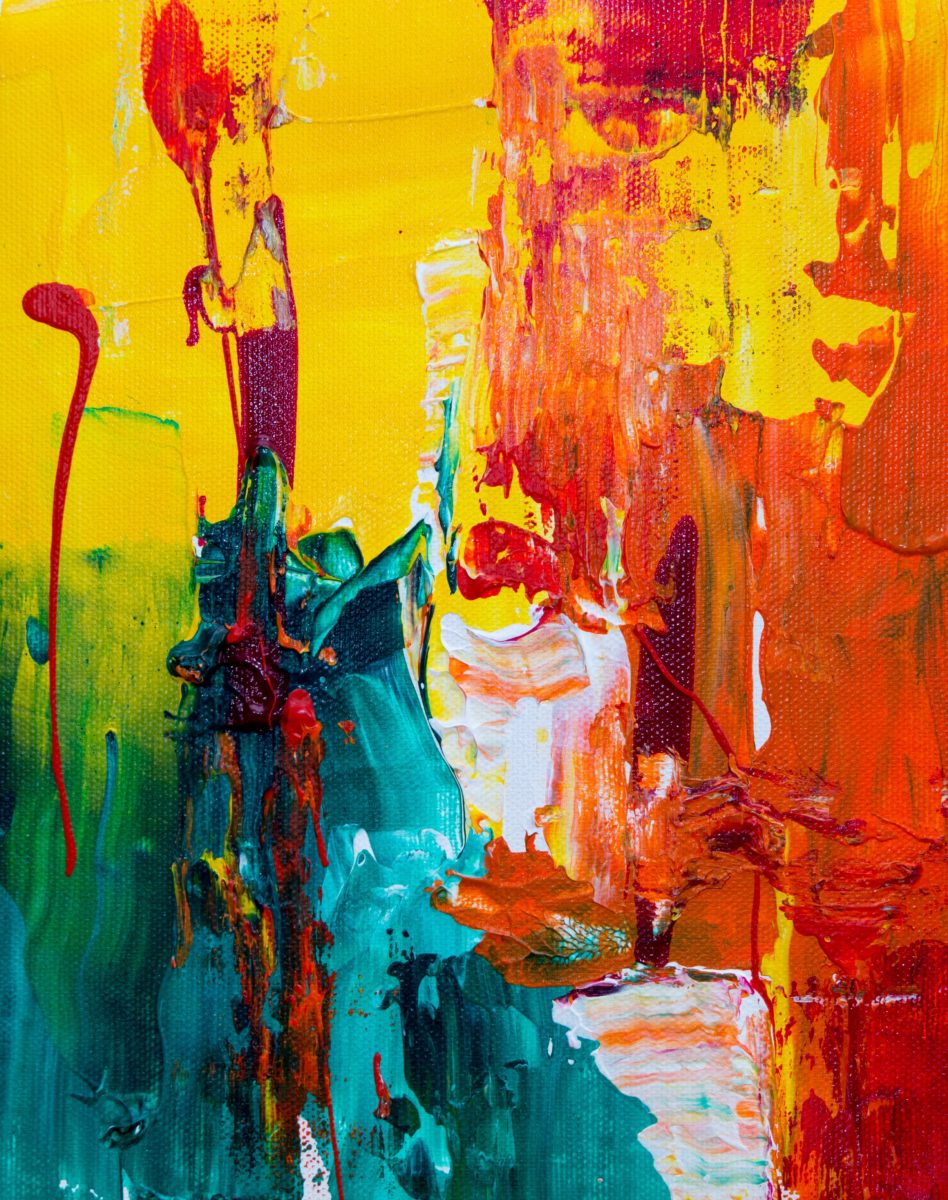Visual art and literary art have established a beautiful, long-standing connection. Famous poets like William Carlos Williams, W.H. Auden, and even the ancient Greek Hesiod drew inspiration from works like paintings, sculptures, and entire museums. Dubbed “ekphrasis,” this form continues today, with a major goal of speculating or expanding on the original art’s meaning.
Many art exhibits even contain poetic components, like the temporary installation of a Joy Harjo poem at the Minnesota Museum of Arts and the Museum of Native Contemporary Arts. But can ekphrastic poems capture the vividness, color, and imagery of art itself? If these four poems have anything to say about it, the answer is yes — and should encourage you to bring a notepad and pen to your local art museum.
“Dots Everywhere” by Richard Siken
In addition to being a poet and a winner of the Yale Series of Younger Poets Competition, Richard Siken is a painter and photographer. In his second book, War of the Foxes, this becomes key subject matter. Siken muses on the anxiety of creation, the artistic process, and how different viewers react to art. He also uses art as an extended metaphor for relationships, love, and other, more intangible ideas.
In “Dots Everywhere,” Siken reflects on the difference between art and reality. He describes drawing a romantic partner with fangs, drawing himself as a floating, legless body, and painting drunk and putting “dots of color everywhere.” In these surreal landscapes, Siken seems to argue that creative liberties can lead to deeper meanings: “Something has happened in the paint tonight and / it is worth keeping. It’s nothing like I thought it /would be and closer to what I meant. None of it is / real, darling. I say it to you. Maybe we will wake up / singing.”
“In the Gallery of the Ordinary” by William Logan
Have you ever stared at a painting of clouds or fields and suddenly felt bored and sleepy? Logan crystallizes this common field trip experience, depicting these works as “too gorged on joy” and “dull, worn-out gilt.” Yet a remarkable shift occurs in the poem, one that moves readers from a feeling of disinterest to one of sudden enchantment.
In the last few lines of the poem, Logan moves toward a powerful question. He begins to see the ordinary as worthy of inspiring art, even claiming that we should recognize the artistic value all around us. “The nights there were scumbled with art,” Logan writes. “How could we have ever taken them / for the abstinence of art?”
“Fragment of a Woman from Kos” by Susan Mitchell
My favorite works of art have always been portraits. I enjoy thinking about the subject’s emotional state, backstory, and more, imagining a life full of rich details from one illustration. With ancient sculptures, this train of thought becomes even more fascinating — and a lot more difficult.
In this poem, Mitchell relates a typical art museum experience: seeing a fragmented sculpture with completely chipped, sometimes indistinguishable features. In spite of this, Mitchell still tries to recall what the woman’s life may have been like. Moreover, she sees the sculpture’s lasting presence as a testament to the woman’s strength. There was a woman, / young, beautiful—you used to hug her / from behind, closing your hands / over the cry of surprise / she gave out / like perfume. Now here / she is, rising / from the dead / landscape of memory, just this / fragment of her, still / kneeling.”
“Nude Descending” by Alicia Ostriker
One of the best parts about ekphrasis? It can give a voice to the voiceless and subvert expectations. As much as I absolutely love visual art (especially art by amazing women), any art history class or Internet deep dive will tell you it can be seriously sexist.
In “Nude Descending,” Ostriker gives personality, voice, and emotion to a nude sculpture, questioning how others see her and how she sees herself. In this, Ostriker also motivates the audience to consider how we both commercialize and objectify the female form. She does not dance. She does not wish / To produce another’s pleasure,” Ostriker says of the sculpture. “They have torn her apart / Into beige rectangles.
Feeling inspired and want to get started on a poem right away? It’s also possible to browse your favorite museum galleries online! Pick a work of art and take your readers beneath its surface.




